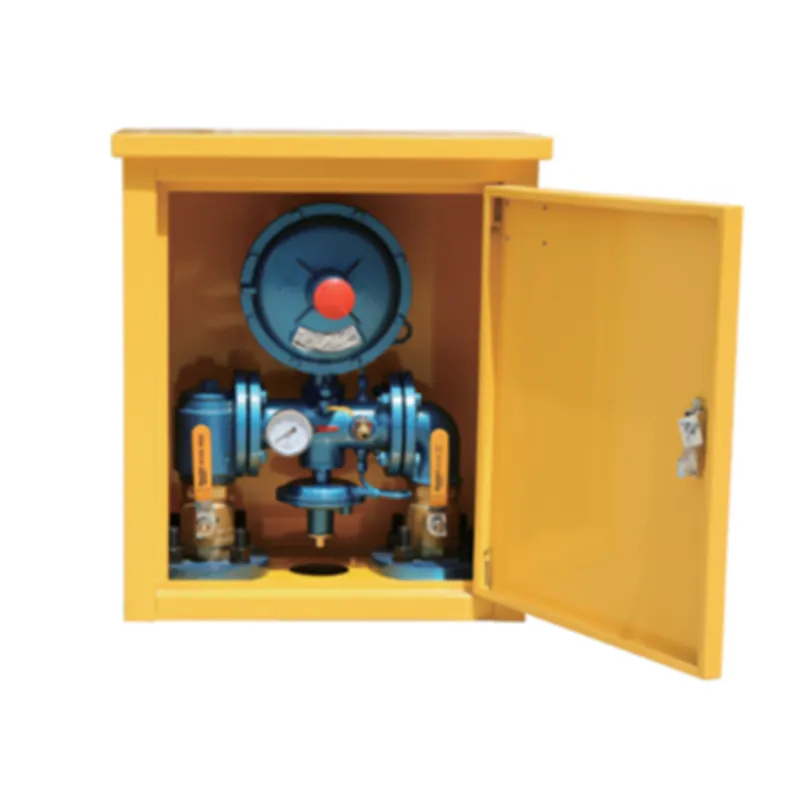
Dec . 12, 2024 18:06
Back to list
Pressure Regulator Features and Applications for Optimal Performance in Various Systems
Understanding Pressure Regulators An Essential Component in Fluid Systems
Pressure regulators, often referred to as pressure-reducing valves, are essential devices used in various industries and applications to control the pressure of gases and liquids. Their primary function is to maintain a constant output pressure regardless of fluctuations in the input pressure or variations in the flow rate. This capability is crucial for ensuring the safety, efficiency, and reliability of different systems, ranging from industrial processes to everyday appliances.
The Importance of Pressure Regulation
In many processes, maintaining a consistent pressure is vital for optimal performance. For example, in the natural gas industry, pressure regulators ensure that the gas delivered to consumers remains within safe and usable limits, preventing potential hazards such as leaks or explosions. Similarly, in pharmaceutical manufacturing, precise pressure control is critical to ensuring that chemical reactions occur safely and effectively, producing high-quality products.
In addition to safety considerations, pressure regulators contribute significantly to energy efficiency. By optimizing the pressure within a system, these devices can help reduce energy consumption. For example, in water distribution systems, using pressure regulation can minimize leaks and losses, leading to substantial savings in both energy and financial resources.
How Pressure Regulators Work
A pressure regulator typically consists of a valve, a spring, and a diaphragm. The diaphragm responds to the incoming pressure by either allowing more fluid to pass through or restricting flow, adjusting the outlet pressure accordingly. When the input pressure rises above the desired output level, the diaphragm moves to close the valve partially, reducing the flow. Conversely, if the input pressure drops, the spring pushes the diaphragm down to open the valve and allow more flow to stabilize the system.
.
Applications of Pressure Regulators
منظم الضغط

1. Industrial Applications In manufacturing plants, pressure regulators are critical for processes that involve gases and liquids at varying pressures. They ensure that machinery operates within safe limits, enhancing productivity and equipment lifespan.
2. Commercial Use Restaurants and cafeterias often utilize pressure regulators in their gas supply lines to ensure that appliances like ovens and grills receive a steady gas supply, thus enabling consistent cooking temperatures.
3. Residential Systems Many homes rely on pressure regulators to manage water pressure from municipal supplies. This prevents pipe damage from excessive pressure while ensuring that residents have adequate water supply for daily activities.
4. Medical Equipment In hospitals, pressure regulation is crucial in devices such as ventilators and oxygen supplies. Regulators ensure that patients receive a precise and safe amount of air or oxygen, tailored to their medical needs.
Future Trends in Pressure Regulation
As technology advances, pressure regulators are becoming more sophisticated. Innovations in materials and design are leading to lighter, more durable, and highly efficient regulators. Additionally, the integration of smart technology is beginning to surface, providing real-time monitoring and automated adjustments based on system demands.
Moreover, as industries strive for sustainability, there is an increasing focus on pressure regulation systems that enhance energy efficiency. This shift not only reduces operating costs but also minimizes environmental impacts, contributing to greener practices across various sectors.
Conclusion
Pressure regulators are indispensable in countless applications, serving as the backbone of systems that rely on precise pressure control. By understanding how these devices work and their importance in various fields, we can appreciate the vital role they play in enhancing safety, efficiency, and performance. As technology evolves, the future of pressure regulation looks promising, with ongoing advancements that will continue to benefit industries and consumers alike.
Next:
Latest news
-
Safety Valve Spring-Loaded Design Overpressure ProtectionNewsJul.25,2025
-
Precision Voltage Regulator AC5 Accuracy Grade PerformanceNewsJul.25,2025
-
Natural Gas Pressure Regulating Skid Industrial Pipeline ApplicationsNewsJul.25,2025
-
Natural Gas Filter Stainless Steel Mesh Element DesignNewsJul.25,2025
-
Gas Pressure Regulator Valve Direct-Acting Spring-Loaded DesignNewsJul.25,2025
-
Decompression Equipment Multi-Stage Heat Exchange System DesignNewsJul.25,2025

